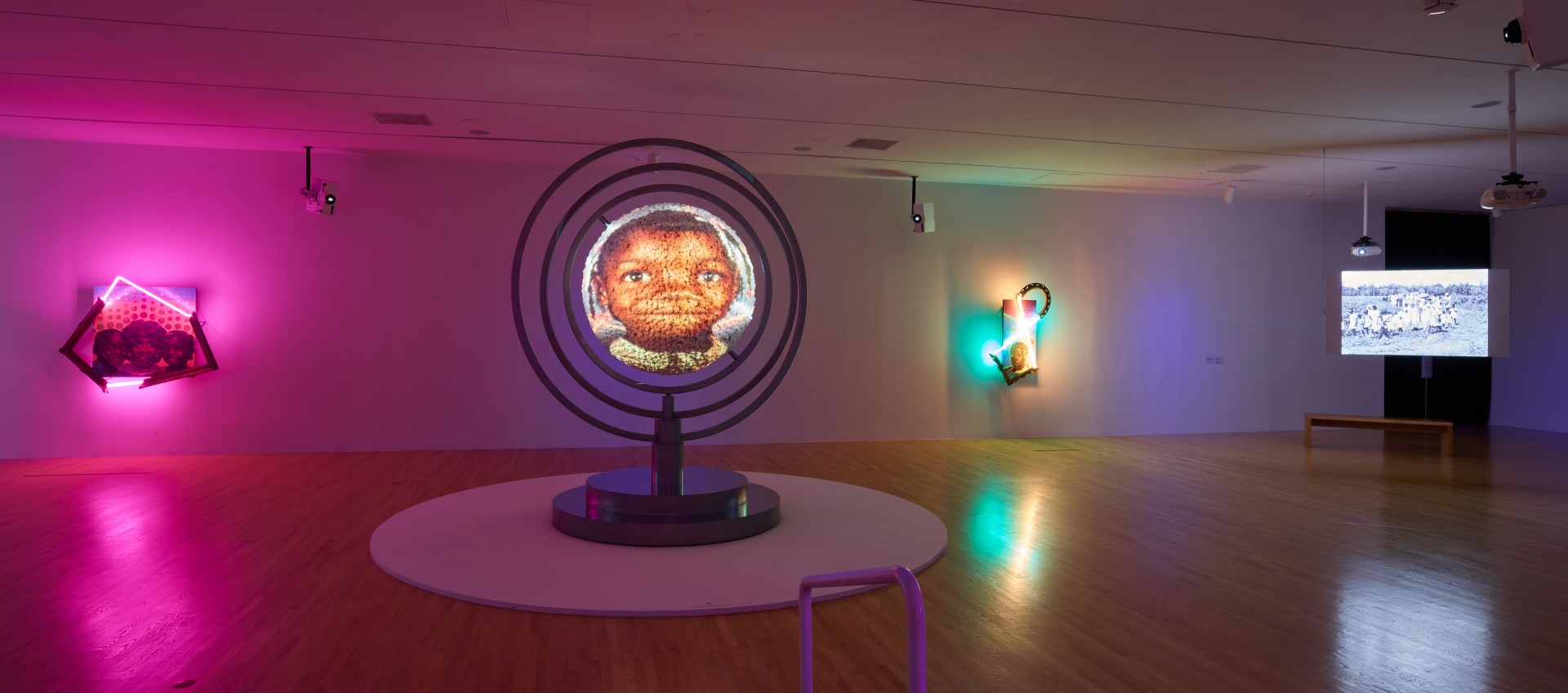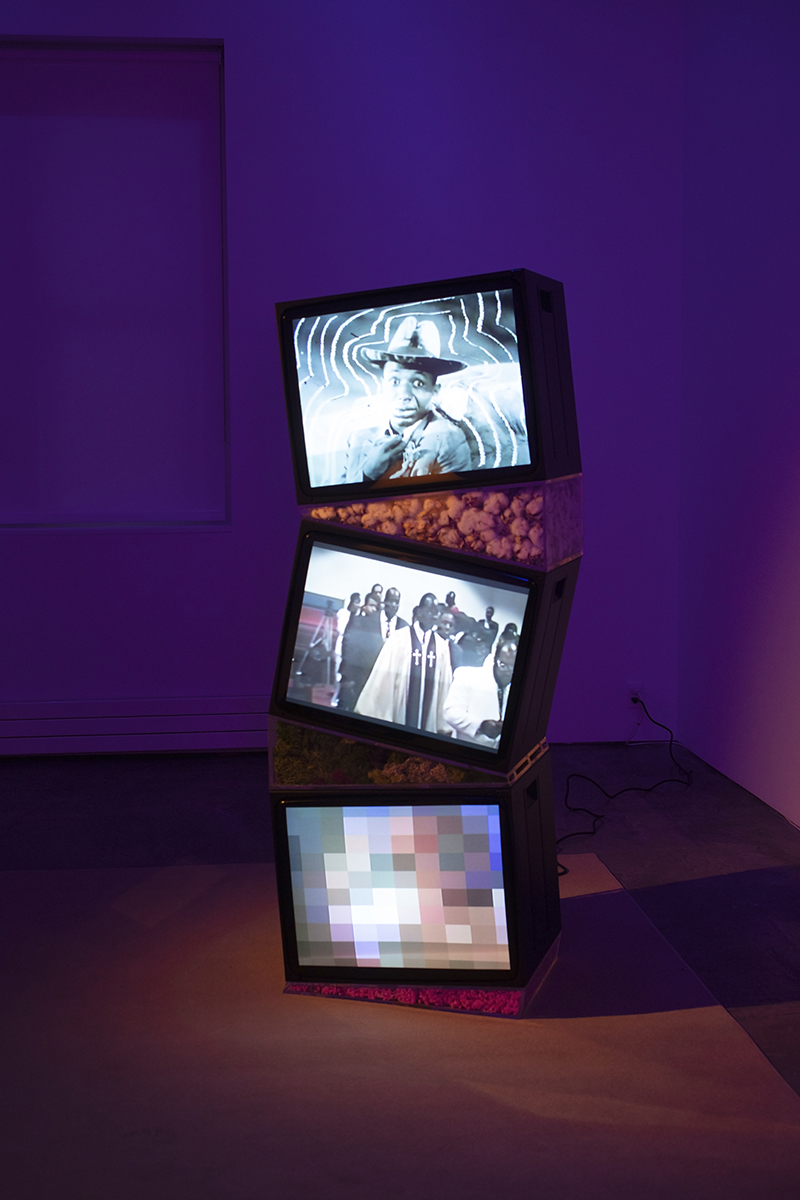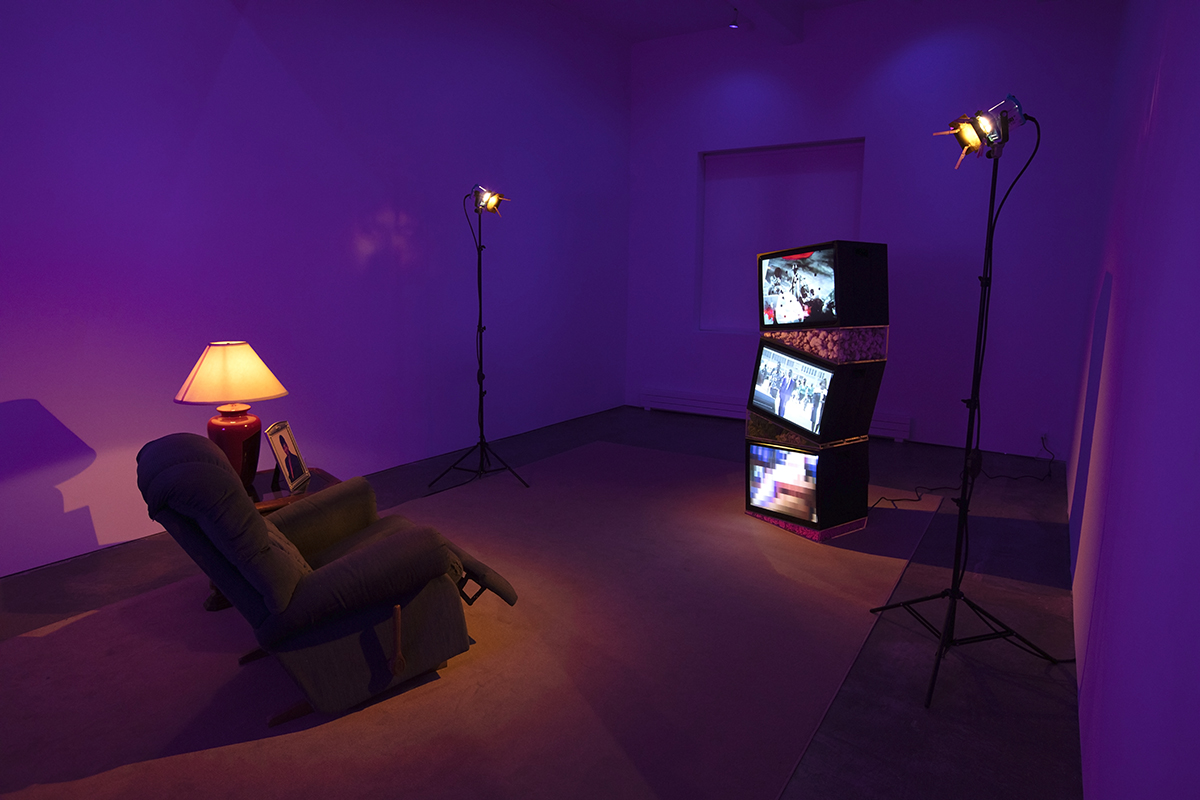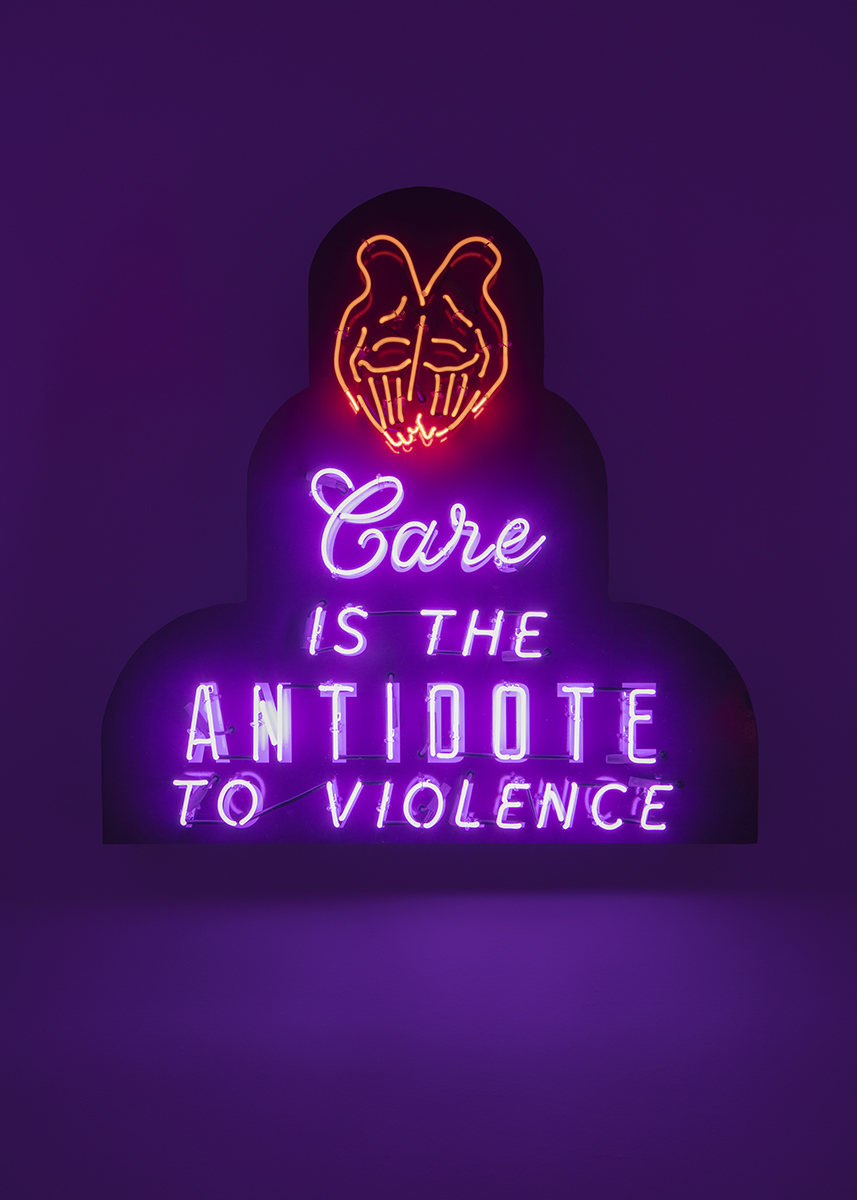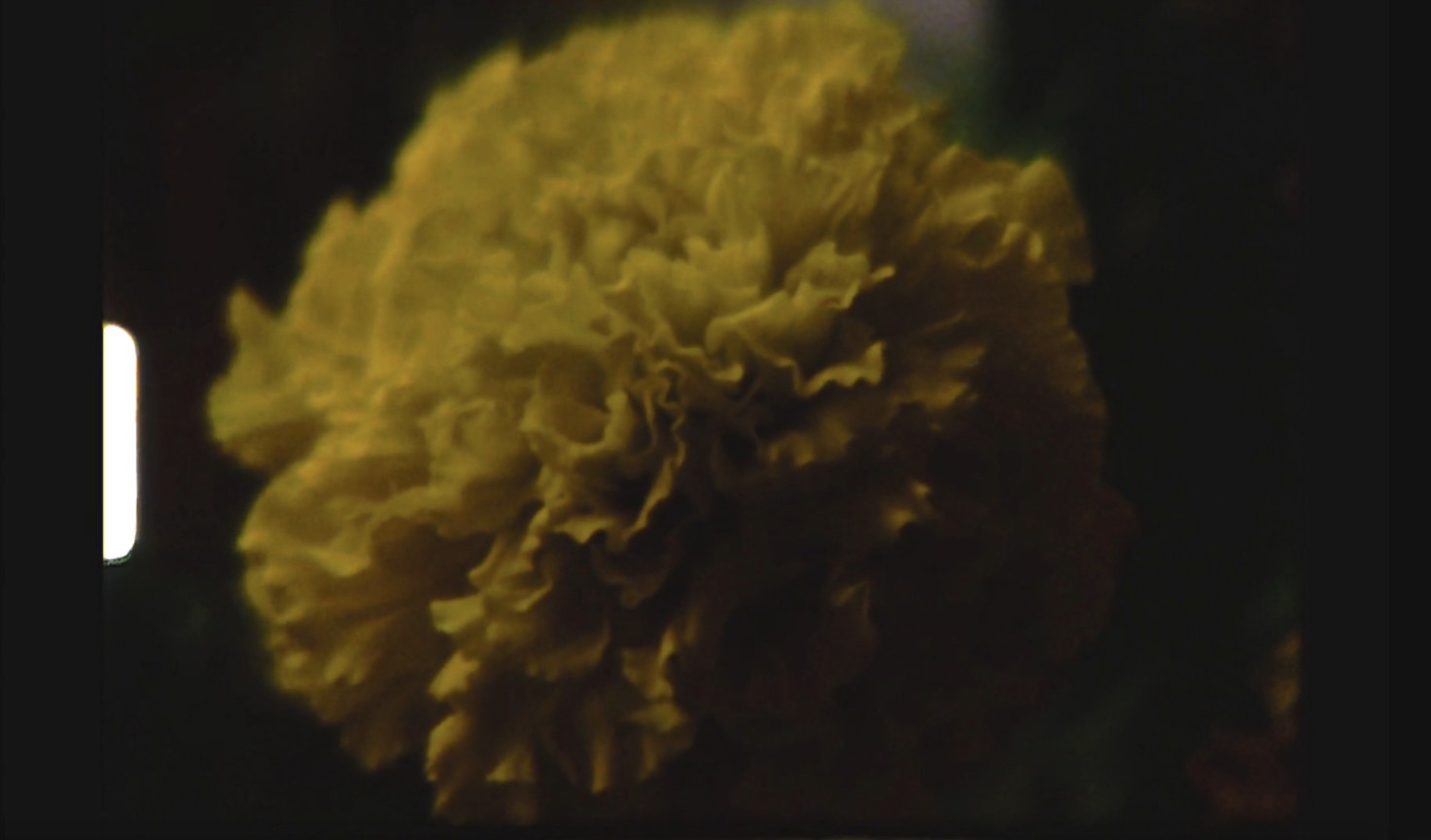Curated by Anna Katherine Brodbeck after being originated by curator Vivian Crockett, the solo exhibition of the artist’s recent works, Concentrations 64: Ja’Tovia Gary, I KNOW IT WAS THE BLOOD, is presented in the museum’s Hoffman Galleries as both memoir and homage to Gary’s matrilineal legacies. Across two rooms, the five multimedia works on view—neon and mobile sculptures, paintings, and films that pull from Gary’s family archives—sing a resonant hymn, emitting a haloed pink aura punctuated by flashes of red across screens. The title, I KNOW IT WAS THE BLOOD, references a gospel song made popular in Black churches. While the lyrics proclaim a devotion to Jesus Christ and his ultimate sacrifice, the works on view conjure a certain reverence for Gary’s family members, their shared knowledge, and generational wounds. For Gary, who calls to her orishas and egun throughout the works, the exhibition title is a truth. The blood is divine.
Upon entering the first gallery, Precious Memories (2020), a sculptural installation composed of a tower of monitors set in a staged living room environment, takes center stage. The tower stacks three off-balanced monitors atop one another, with natural materials—cotton, moss, and helichrysum flower—wedged between each TV. The topmost one plays archival footage of a soundie, a short musical film format popularized in the 1940s that provided Black performers a unique opportunity to be featured in films (and for archivists, a rare form of documentation of African American performers). In this instance, Louis Armstrong performs a dramatized rendition of “When It’s Sleepy Time Down South”—a jazz song whose original lyrics reminisce on an idyllic South while giving in to racist stereotypes—alongside a cast that includes a mammy figure and a Sambo figure dancing with an oversized chicken leg. Here, Gary has inscribed red etched, painted, and scratched illustrations that resemble blood and splatter onto the surface of the film, emphasizing the violence present in the soundie’s representation of Black figures. Beneath, Gary memorializes the death of her stepfather with footage of his funeral service, a morose film that documents their family in their church and as they walk back to their cars. At the bottom, Gary abstracts a porn film into a pixelated symphony of patterns, movement, and light, any sex acts illegible to an untrained eye. The three-channel installation is spotlighted by two stage lamps. Nearby, a portrait of Gary’s mother sits on a table beside a La-Z-Boy recliner, reminiscent of the one Gary grew up with in her childhood home, [they tell me], facing the leaning tower of screens. The installation’s mise-en-scène recalls a sort of tired homeyness; a familiar sense of comfort and nostalgia arises with the vacancy of the worn chair.
Placing the viewer in a surrealist construction of Gary’s childhood home, and by extension their childhood self, Precious Memories meditates on how trauma—generational, institutional, and gender-based—shapes our memory and ability to cope. Notably, the three video loops emerge from three distinct generations through which Black Americans found representation in film, for better or worse: the early twentieth century, the dawn of the new millennium, and most recently, the digital age. This work also draws on three distinct filmic genres: the musical film, home movie, and internet pornography. Gary, who in her work imposes an oppositional gaze, affirms Black feminist spectatorship with this juxtaposition.1 She offers a sort of visual pleasure in deconstructing the violence of the original texts by connecting historical and personal wounds. Her interventions, the illustrated and experimental inscription into the surface of the films, create visual metaphors that acknowledge the harm enacted in racist and fetishistic representations. The installation offers a rare instance of an immersive and affective visualization of Black femme experiences and, most importantly, Gary’s interiority. Precious Memories invites you to take a seat in her place.
